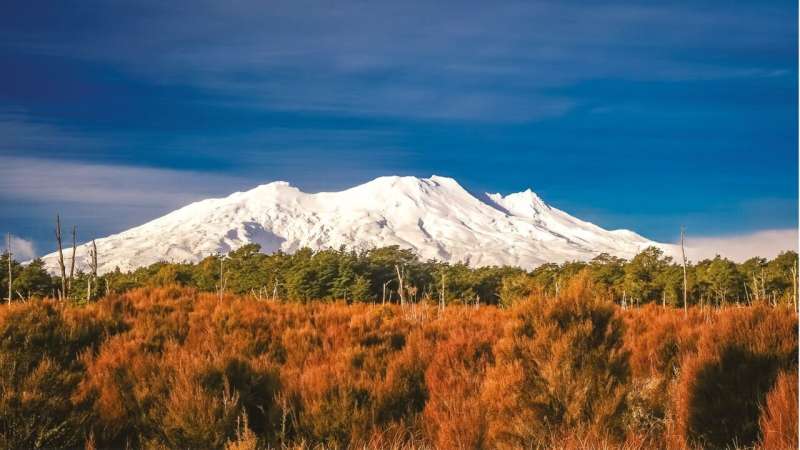Credit: Victoria University of Wellington
Tongariro National Park is not just centrally located—it's a central part of New Zealand culture.
The park is home to Mount Ruapehu, known as Koro (grandfather) to local iwi Ngāti Rangi. His slopes and the surrounding park are home to several biodiversity hotspots supporting many of New Zealand's unique plant species—sites that, like many other natural landscapes around the world, are under threat from climate change.
Dr. Julie Deslippe from the School of Biological Sciences is working with Ngāti Rangi and the Department of Conservation to help determine how climate change will affect the taonga tipu (sacred plants) living in the park and how they can be protected."If we don't work to address the impacts of climate change, the landscapes we engage with on a cultural and spiritual level will be gone. Biodiversity underpins everything—the air we breathe, the water we drink, and the climate we live in," Julie says.
Julie's project began by gathering knowledge from Ngāti Rangi on what plants in the area are used by the iwi and their cultural significance. These interviews, led by Ngāti Rangi iwi member Deborah Te Riaki, identified 45 of the most culturally significant plants in the park. Julie's team then collected data on where these plants grew in the park and how abundant they were. The field surveys, led by Ph.D. student Justyna Giejsztowt, also employed two local school students from Ngāti Rangi, providing a unique on-the-job training opportunity in their own rohe.
"Working with Ngāti Rangi on this project was essential," Julie says. "The exchange of cultural and ecological knowledge among the members of the team provided a much more holistic understanding of the place."
There are two major threats to the taonga tipu in Tongariro National Park—increasing temperatures, and the invasion of European heather, a problem weed. Julie's team created digital models of how these risk factors would impact a representative sample of five of the 45 plants identified by Ngāti Rangi.
Julie says, regardless of the degree of warming, all models predict increasing infestation of heather in the park, with negative consequences for the spread of taonga tipu in the park. However, Julie believes New Zealand has the ability to use this knowledge to make real progress in countering climate change.
"Now we have more information, we can make an informed decision on how to counter this threat and figure out which conservation tools could help preserve these landscapes," Julie says. "We have the political will and expertise, and the bicultural dialog in New Zealand is world-leading—if we can manage climate change anywhere, it's here."
An expert from Ngāti Rangi is using the information gathered as part of this project to create educational resources for children to help educate all New Zealanders about taonga tipu and how we can help preserve them for future generations.
"We want to help preserve mātauranga Māori," Julie says.
Provided by Victoria University of Wellington























